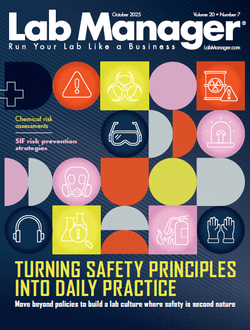In today’s competitive and highly regulated industries, laboratories play a crucial role in ensuring product safety, regulatory compliance, and quality assurance. As organizations strive to optimize efficiency and control costs, one critical decision arises: Should testing be conducted in-house or outsourced to external service providers?
This decision impacts not only a lab’s budget but also its control over data, turnaround times, and infrastructure investments. For labs in industries such as pharmaceuticals, food safety, environmental analysis, biotechnology, medical devices, and manufacturing, striking the right balance between cost and control can directly influence competitiveness and innovation.
This article explores the benefits and drawbacks of both approaches and examines the key factors—including turnaround times, quality assurance, confidentiality, infrastructure requirements, and budget considerations—to help laboratories make an informed decision about laboratory testing strategies and quality control solutions.
Turnaround Times: Speed and Efficiency
In-House Testing: In-house laboratories offer the advantage of immediate access to testing capabilities, often resulting in faster turnaround times. Without the need to ship samples or wait in a service provider’s queue, internal labs can prioritize urgent projects and respond quickly to unexpected testing needs.
Outsourced Testing :Outsourcing laboratory testing services introduces inherent delays, including sample transport, queue times at the external lab, and communication lags. However, specialized third-party labs often operate at larger scales with streamlined processes, which can mitigate some delays for routine testing.
⚖️ Verdict: In-house testing typically offers faster turnaround for high-priority and ad-hoc testing, while outsourcing may be equally efficient for scheduled, routine testing.
Quality Assurance: Maintaining High Standards
In-House Testing: Labs maintaining their own testing capabilities have direct oversight over quality processes, method validation, and instrument calibration. This control helps ensure consistent adherence to internal quality standards and regulatory requirements.
Outsourced Testing: Reputable third-party labs adhere to stringent quality standards (ISO 17025, GLP, GMP, etc.), often bringing specialized expertise and state-of-the-art equipment. However, relying on external partners requires trust in their processes and occasional audits to ensure consistent performance.
⚖️ Verdict: Both approaches can ensure high-quality results, but in-house labs offer more direct quality oversight.
Confidentiality: Protecting Sensitive Data
In-House Testing: Internal testing provides maximum control over proprietary data, confidential formulations, and intellectual property. Sensitive formulations, processes, or test results never leave the organization, minimizing the risk of data breaches or IP theft.
Outsourced Testing: Outsourcing analytical testing services always carries some risk of data exposure. Reputable service providers employ strict confidentiality agreements, secure data transfer protocols, and data protection measures, but transmitting sensitive data externally inherently increases risk.
⚖️ Verdict: In-house testing offers superior confidentiality and data security.
Infrastructure Requirements: Investment and Maintenance
In-House Testing: Maintaining internal testing capabilities requires significant investments in laboratory equipment, facilities, consumables, software systems, and skilled personnel. Labs must budget for ongoing maintenance, calibration, and software updates to ensure optimal performance and compliance with evolving regulations.
Outsourced Testing: Outsourcing eliminates the need for costly infrastructure investments. Partnering with external laboratories allows organizations to access specialized equipment, accredited methods, and industry expertise without bearing the full capital expense.
⚖️ Verdict: Outsourced testing reduces infrastructure costs, while in-house labs require ongoing investment.
Budget Considerations: Short-Term vs. Long-Term Costs
In-House Testing: The initial costs of establishing and maintaining an internal lab can be high. However, for high testing volumes, the per-test cost can decrease over time, potentially making in-house testing more cost-effective in the long run.
Outsourced Testing: Outsourcing testing services offer predictable, pay-as-you-go pricing that is ideal for low-volume or occasional testing needs. However, heavy reliance on outsourcing can become expensive compared to spreading fixed costs across high testing volumes in-house.
⚖️ Verdict: Outsourcing is cost-effective for low-volume testing, while in-house labs may offer better long-term value for high testing volumes.
Pros and Cons of In-House vs Outsourced Testing
| Factor | In-House Testing - Pros | In-House Testing - Cons | Outsourced Testing - Pros | Outsourced Testing - Cons |
|---|---|---|---|---|
| Turnaround Time | Immediate access to equipment | Limited by internal capacity | Efficient for routine testing | Delays due to transport and queues |
| Quality Assurance | Direct control over processes | Requires internal expertise | Adherence to external standards | Less direct oversight |
| Confidentiality | Maximum data security | Internal data management responsibility | Confidentiality agreements in place | Higher risk of data exposure |
| Infrastructure Costs | Long-term investment in equipment | High upfront and maintenance costs | Access to specialized equipment | Dependent on external provider |
| Budget Flexibility | Cost-efficient at high testing volumes | Higher costs if testing volume is low | Pay-as-you-go for low-volume testing | Can become costly for frequent testing |
Conclusion: Finding the Right Balance
The choice between in-house testing and outsourced testing depends heavily on your organization’s testing volume, budget, quality requirements, and sensitivity to data security. Many organizations adopt a hybrid approach, maintaining core in-house capabilities for critical or high-volume testing while outsourcing specialized or infrequent analyses.
By understanding the trade-offs between cost and control, laboratories can design a flexible, efficient testing strategy that supports both short-term needs and long-term growth.
Looking to evaluate your laboratory’s testing strategy? Explore how ContractLaboratory.com can connect you with trusted third-party labs or provide guidance on building internal capabilities. Start optimizing your laboratory testing processes, cost management, and quality assurance practices today.
This content includes text that has been generated with the assistance of AI. Lab Manager’s AI policy can be found here.











